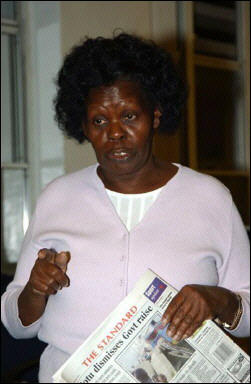Featured
- Get link
- X
- Other Apps
The Glory is Gone: JIAM Down as Ruto's Government Strikes the Church. Is Commander Ng’ang’a's Neno Next?
Wanjiru, who is known for her spirited gubernatorial campaigns in the previous General Election, sustained injuries during the demolition on Wednesday 6 February and plans to seek medical treatment. In a tearful statement to journalists, she described the brutal assault on herself and her followers, lamenting, "Nimepigwa, nimeumia mkono na mguu, hata nataka kwenda hospitali; watu wangu pia wamepigwa wote, everyone is bleeding."
Wanjiru vehemently asserted ownership of the property, denying any claims by Kenya Railways, and expressing shock at the government's actions. "Hii Weruga Lane haina property ya Railways, this is our own investment, hii ni property yetu ya kanisa," she asserted, highlighting the emotional and material toll of the demolition.
Expressing her disappointment with the government, Wanjiru emphasised her previous support for the Kenya Kwanza government and her role as a chief campaigner in Nairobi. "I wasn't campaigning to be repaid like this. It is very sad that this is the government that we campaigned for," she remarked, expressing disbelief at the government's actions despite her contributions.
The controversy surrounding the demolition dates back to 2022 when a court case challenging the construction of a wall between Kenya Railways' land and Bishop Margaret Wanjiru's church was dismissed. Despite the legal dispute, the demolition proceeded, sparking outrage and renewed scrutiny over the government's involvement.
As the situation unfolds, questions linger about the motives behind the demolition and the role of government agencies. Calls for accountability and justice grow louder, with Bishop Wanjiru and her supporters demanding answers and restitution for the damages incurred.
In the midst of mounting tensions and accusations, the fate of Bishop Wanjiru's church remains uncertain, underscoring broader concerns about property rights, religious freedom, and governance in Nairobi.
Which only reminds me of that sagely piece of eternal advice by James Orengo, SC, on the floor of the National Assembly so long ago...
Popular Posts

Who’s Nailin’ Paylin?
- Get link
- X
- Other Apps

A selection of Kenyan women
- Get link
- X
- Other Apps


Comments